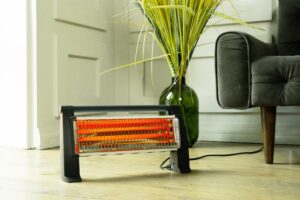As summer fades to fall, it is a good time to start thinking about preparing for winter. One thing you can probably turn off for a few months is your central air conditioner. However, many people “winterize” their HVAC system. At Cates Heating and Cooling, we have a few tips to help you prepare your HVAC system for the cold weather ahead.
What Does “Winterize” Mean?
First, let’s talk about winterizing. What does this term mean? Winterize simply means to prepare for winter. The best time to do this is early fall, so this is the time to get started.
In terms of winterizing an HVAC system, there are a few different steps that you can take to make sure that your HVAC system is ready for the changing weather. Let’s take a look at what you can do to keep your HVAC system in tip-top shape over the cold winter months and protect it from snow and ice.
Steps for Winterizing Your HVAC System
Here are a few basic steps for winterizing your HVAC system:
- Have a technician come out to perform routine maintenance before it gets cold. It is best to do this before you start the rest of your winterization process. Having a professional come inspect your unit will ensure that your system has enough fluids to run properly all winter long.
- Remove all the leaves, twigs, and other debris from the outdoor unit. Using the garden hose, rinse the unit to remove dirt and dust from the unit. Before moving on, let the HVAC unit dry completely.
- Cover your unit with a waterproof A/C unit cover. Secure the cover to keep moisture out as much as possible. Be aware that covers can also trap moisture onto the unit. Always make sure that the unit and cover is completely dry before putting a cover on the unit. If your cover is wet, wait for it to fully dry before putting it over the HVAC unit or purchase a new cover if yours is wet or otherwise damaged. If you have a heat pump, never use a cover as it could damage the system.
- When the weather gets bad, do your best to keep snow and ice away from the unit. You will want to remove any snow that builds up on top of the unit. Also, frequently remove the cover to check for any animals that might be taking up residence in your HVAC unit.
Benefits of Winterizing Your HVAC System
There are a few benefits to winterizing your HVAC system, but the best reason to go through this process is to identify any problems with your unit before the cold weather sets in. We always recommend having a maintenance check performed prior to winterizing your HVAC unit for the season. This gives you the chance to make sure that all fluids are at an appropriate level, and all parts are secure and in good condition.
The process can also protect your HVAC unit from moisture. When moisture builds up on your HVAC unit, rust can start to form.
Moisture can cause problems in the winter, but clogs can also be problematic. If debris can still get into your HVAC unit, you might end up with a clog when you start things back up in the spring or summer. Clogs can be tricky to remove, so removing debris at the start of each season (and throughout each) is recommended to prevent clogs in the first place.
If you need to have routine maintenance performed on your unit before the weather turns cold, contact Cates Heating and Cooling today. Cates provides service for the Greater Kansas City Area. We can be reached at 913-888-4470.



















